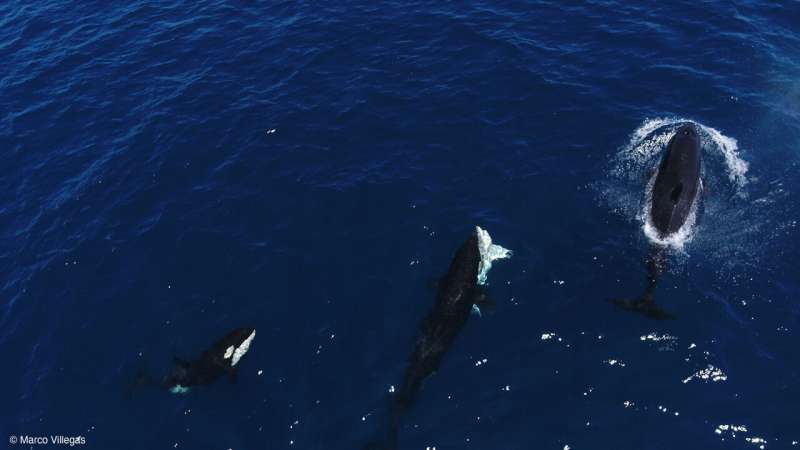A specialized pod of orcas, known as Moctezuma’s pod, has been observed in the Gulf of California engaging in a unique hunting strategy targeting juvenile great white sharks. Recent footage captured these orcas flipping young sharks upside down to access their nutrient-rich livers, suggesting a significant shift in their feeding behavior.
These findings were published in a study in Frontiers in Marine Science by a team of researchers, including marine biologist Erick Higuera Rivas, who serves as the project director at Conexiones Terramar and Pelagic Life. This behavior raises questions about the impact of climate change on shark populations and orca feeding patterns.
During routine monitoring, scientists documented two separate hunts where Moctezuma’s pod successfully killed three juvenile great white sharks. In the first incident in August 2020, five orcas worked together to immobilize a young shark by turning it upside down, subsequently consuming its liver. A second hunt in August 2022 displayed similar tactics, demonstrating the orcas’ advanced hunting skills.
Understanding Orcas’ Hunting Strategy
The technique employed by the orcas induces a state known as tonic immobility, which temporarily disorients the shark, rendering it defenseless. According to Higuera, this method minimizes the risk of injury to the orcas during the hunt. “This behavior is a testament to orcas’ advanced intelligence, strategic thinking, and sophisticated social learning,” he explained, noting that these techniques are passed down through generations within the pod.
Dr. Salvador Jorgensen from California State University, another author of the study, emphasized that adult great white sharks tend to flee when orcas are present, making their young counterparts more vulnerable. “Juvenile white sharks may be naive to orcas,” he stated, highlighting the potential for these young sharks to be frequent targets as they lack the survival instincts of older sharks.
Research indicates that the changing climate, particularly events like El Niño, may have altered the distribution of great white sharks in the Pacific, bringing them closer to Moctezuma’s pod. This could expose more juvenile sharks to predation as their nursery areas shift due to warming waters.
Future Research and Conservation Efforts
The observations made by the research team suggest that the Moctezuma pod may have adapted their hunting techniques based on previous experiences with various elasmobranchs, including rays and bull sharks. However, the researchers acknowledge the need for more extensive surveys to determine if hunting juvenile white sharks is a regular part of the pod’s diet.
Dr. Francesca Pancaldi from the Instituto Politécnico Nacional Centro Interdisciplinario de Ciencias Marinas stressed the importance of understanding orca feeding behaviors to inform conservation efforts. “Generating information about the extraordinary feeding behavior of killer whales in this region will lead us to understand where their main critical habitats are,” she said, emphasizing the need for protective measures to mitigate human impact on these marine ecosystems.
The study not only sheds light on the complex interactions between orcas and juvenile great white sharks but also highlights the broader implications of climate change on marine biodiversity. As researchers continue to monitor this unique pod, they hope to uncover more about the dynamics of predator-prey relationships in the Gulf of California.







































































